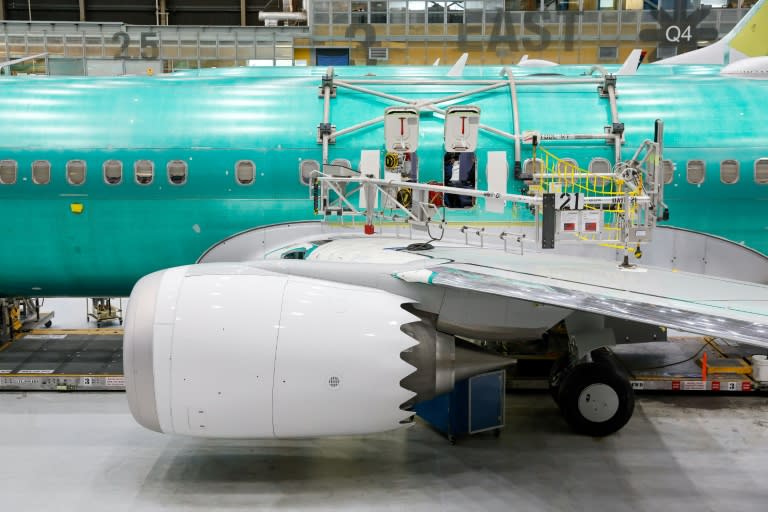Boeing aims to lift MAX quality control at Renton factory

At its plane factory near Seattle, Boeing has increased employee training, appointed mentors for new recruits, brought back retirees as coaches and stepped up tracking of performance metrics.
It's all part of an effort to strengthen quality control on the 737 MAX, a bestselling airliner that has suffered some high-profile problems.
Boeing this week led a tour for reporters at its manufacturing facility in Renton, Washington to see what the company is doing to rebuild confidence and hear from employees on the front line.
"I am extremely confident that every plane leaving this plant is safe," said Elizabeth Lund, a senior vice president for quality at Boeing.
The manufacturer has been under a microscope by regulators at the Federal Aviation Administration following a near-disastrous Alaska Airlines flight in January when a 737 MAX had to make an emergency landing after a fuselage panel blew out mid-flight.
An FAA audit following the incident pointed to compliance problems in Boeing's processes control, parts handling and storage, one factor in the FAA order limiting MAX output.
The agency plans to closely monitor Boeing's implementation of a safety "roadmap" required by the FAA after the Alaska flight.
Lund described four categories of actions Boeing is taking to address systemic issues: investing in workforce training; simplifying plans and processes; eliminating defects; and elevating safety and quality culture.
"We are getting stronger," she said, adding that fully upgrading the operation will take a few years.
Boeing deployed Bill Riley, a 16-year quality inspector, to Spirit AeroSystems' factory in Kansas where fuselages are built for the 737.
"I went to Spirit to teach them what I know here, and learn from them there," Riley said. "And you do see changes on the fuselages we receive here."
Such "face-to-face" meetings lead to a more seamless operation, he said.
- Post-pandemic training blitz -
Since January, some 150 Boeing employees have been assigned to Spirit's Wichita operation, a major increase from before, said Katie Ringgold, vice president and general manager for the 737 program.
The result has been a "significant reduction in the defects on fuselages in just three months," said Ringgold.
The shift has also improved efficiency, resulting in more than a 50 percent drop in late tasks.
These improvements will help Boeing as the company implements improvements throughout its three assembly lines, which are split into 10 stations.
In one change currently underway, workers must check at each station whether the operation has met key criteria before it can pass to the next station.
At first glance, the Renton factory operation seems chaotic, with a succession of planes at various stages of assembly.
But staff scrutinize the details -- reporting if a piece is wrongly detached, or defective in some way. Since the January incident, barcode tracking has been introduced in some cases, overseen by a steward.
Around 300 to 500 people work on each assembly line against a steady industrial buzz.
Nearby sits a training center where new recruits learn the ropes as mechanics and quality inspectors.
The company has added more than 300 hours of supplementary training since the pandemic, which saw a turnover of tens of thousands of workers replaced by newcomers.
New recruits need about four months before they can work on the assembly plant's shop floor.
Boeing engineers also have undertaken training even if it isn't always required, said Mani Tiggs, vice president for manufacturing and safety at Boeing's commercial plane business.
In all, about 600 people frequent the training center each day.
The idea behind the training is to simulate actual factory operations as closely as possible, said Tiggs, adding that the operation has about 160 workplace coaches who guide staff.
A 737 MAX is composed of more than two million components, including around 40,000 rivets that are installed one by one, a process that can sometimes involve more than one person. The MAX also includes some 36 miles (58 kilometers) of cable.
And if one piece "falls on the floor, we don't use it anymore," said one instructor. "It goes in the FOD box," which stands for foreign object debris.
elm-jmb/mdl/mlm/dw


